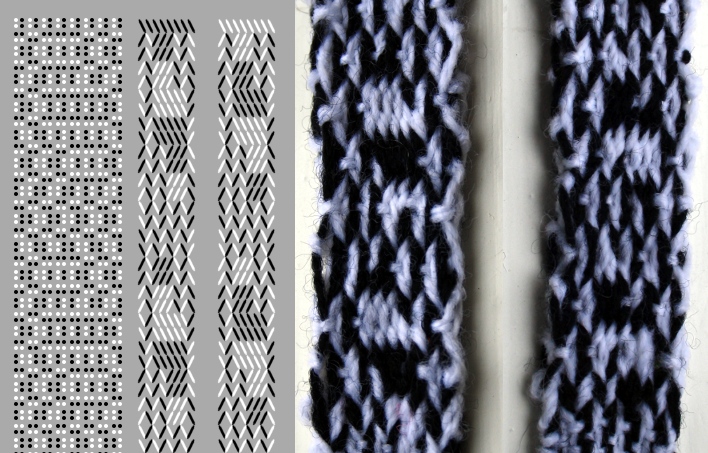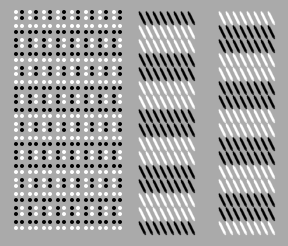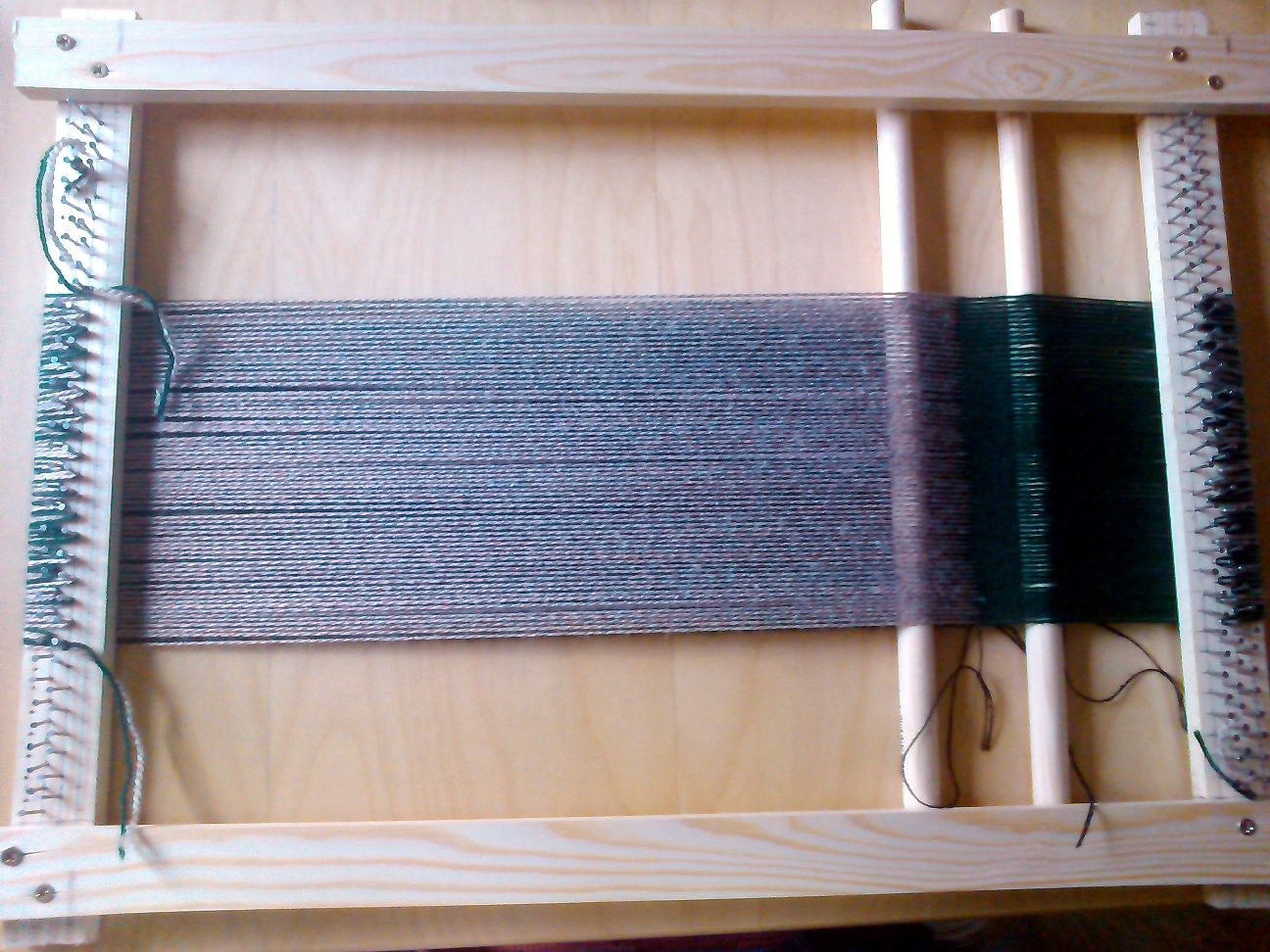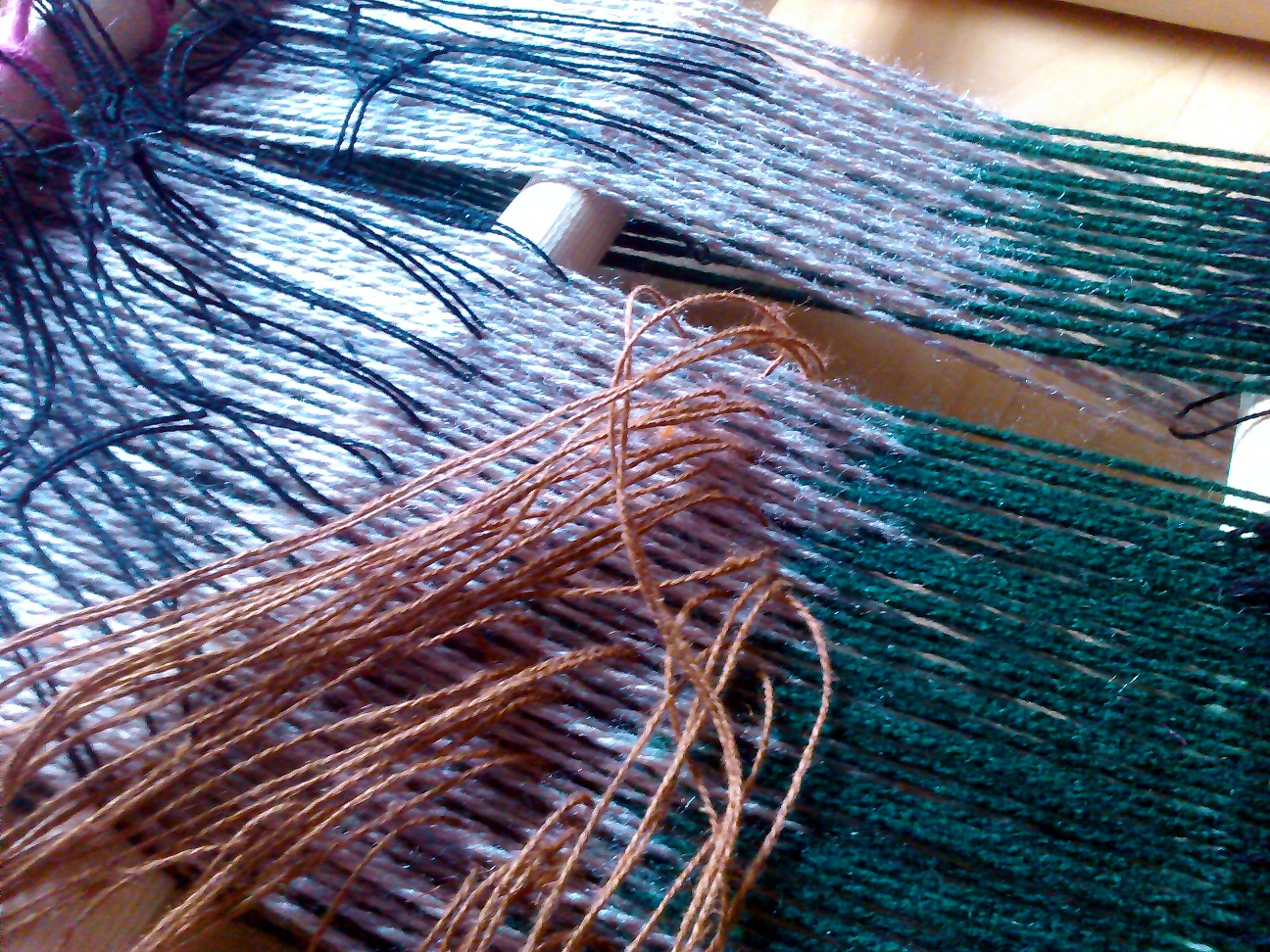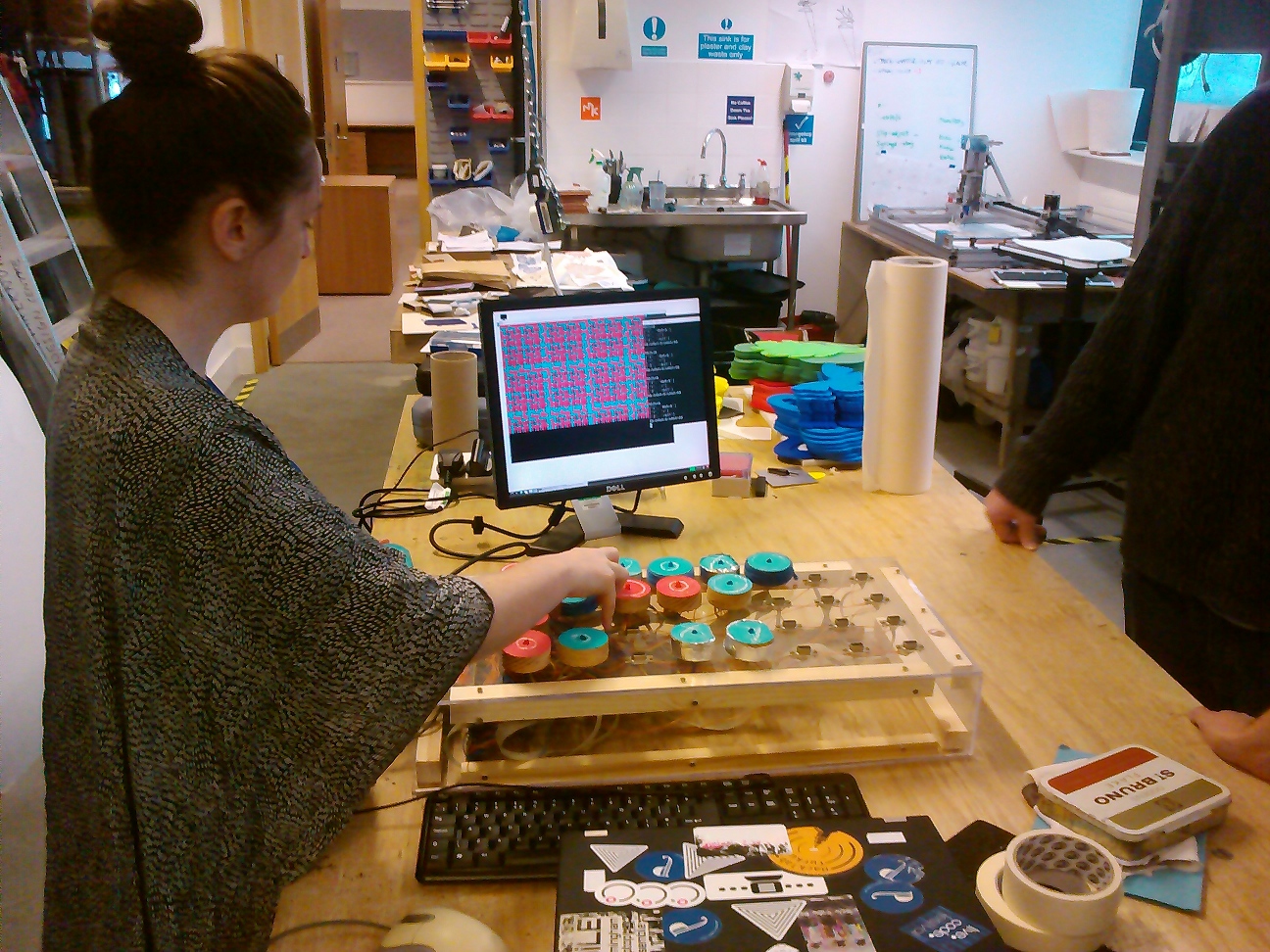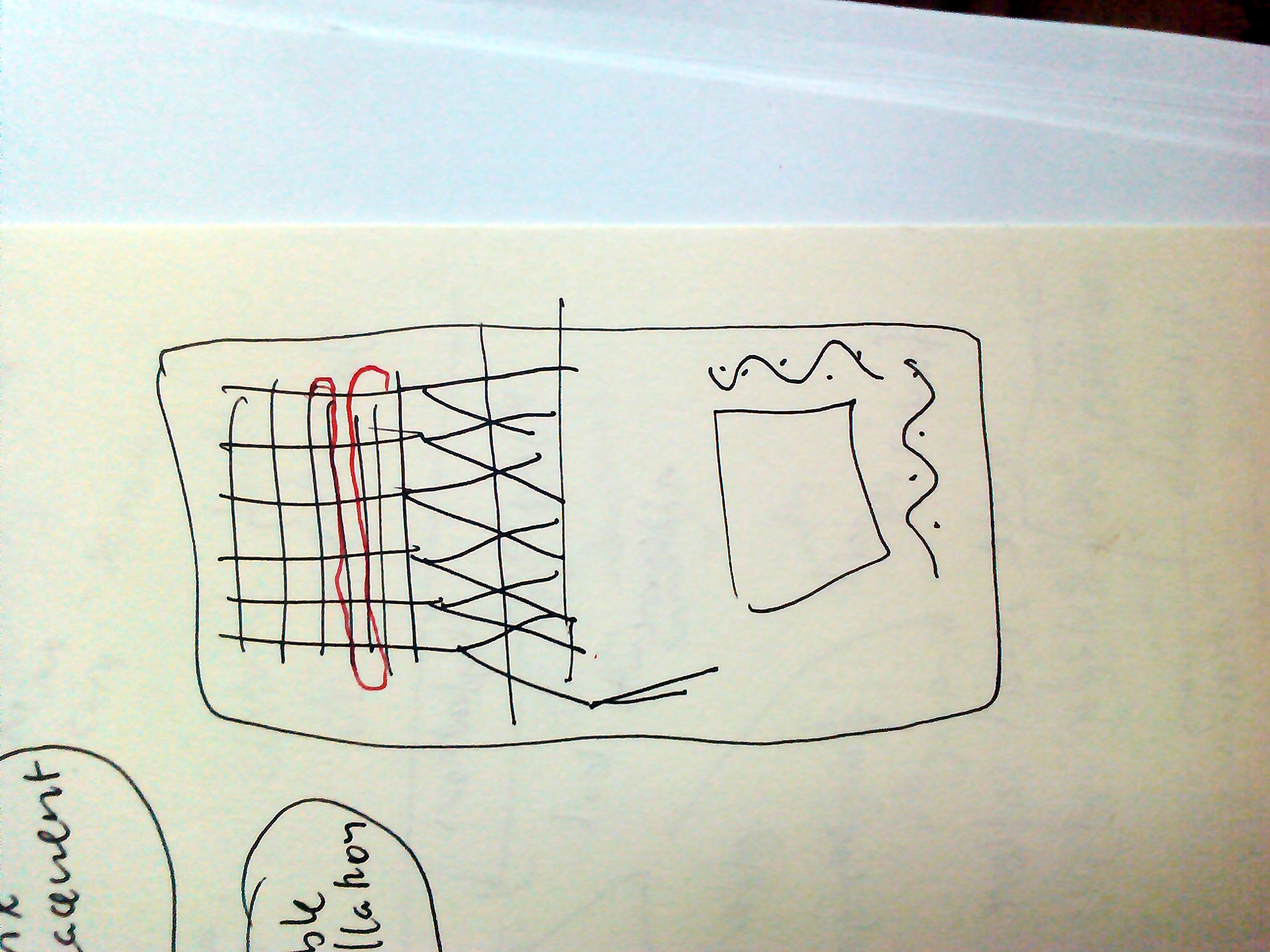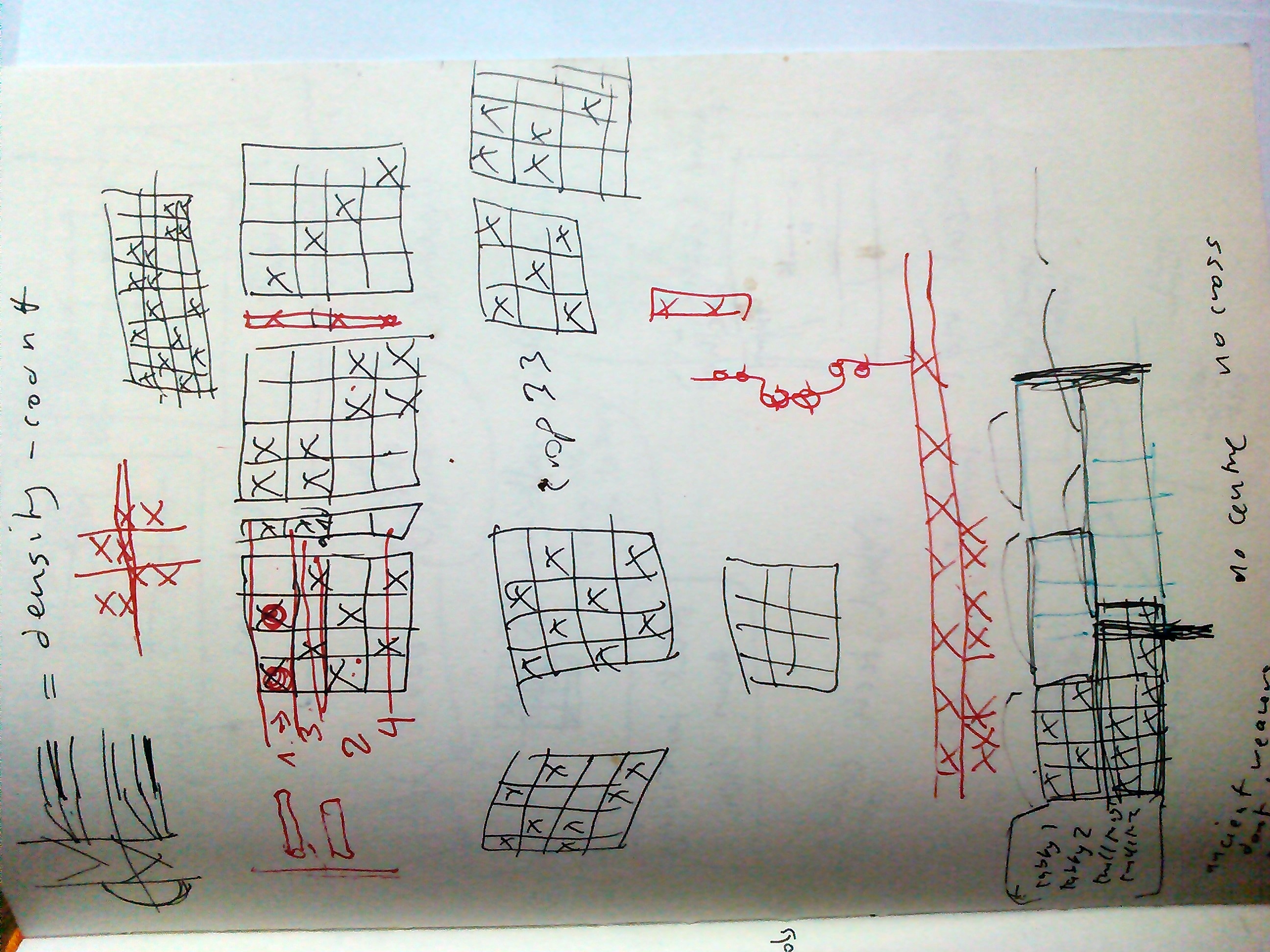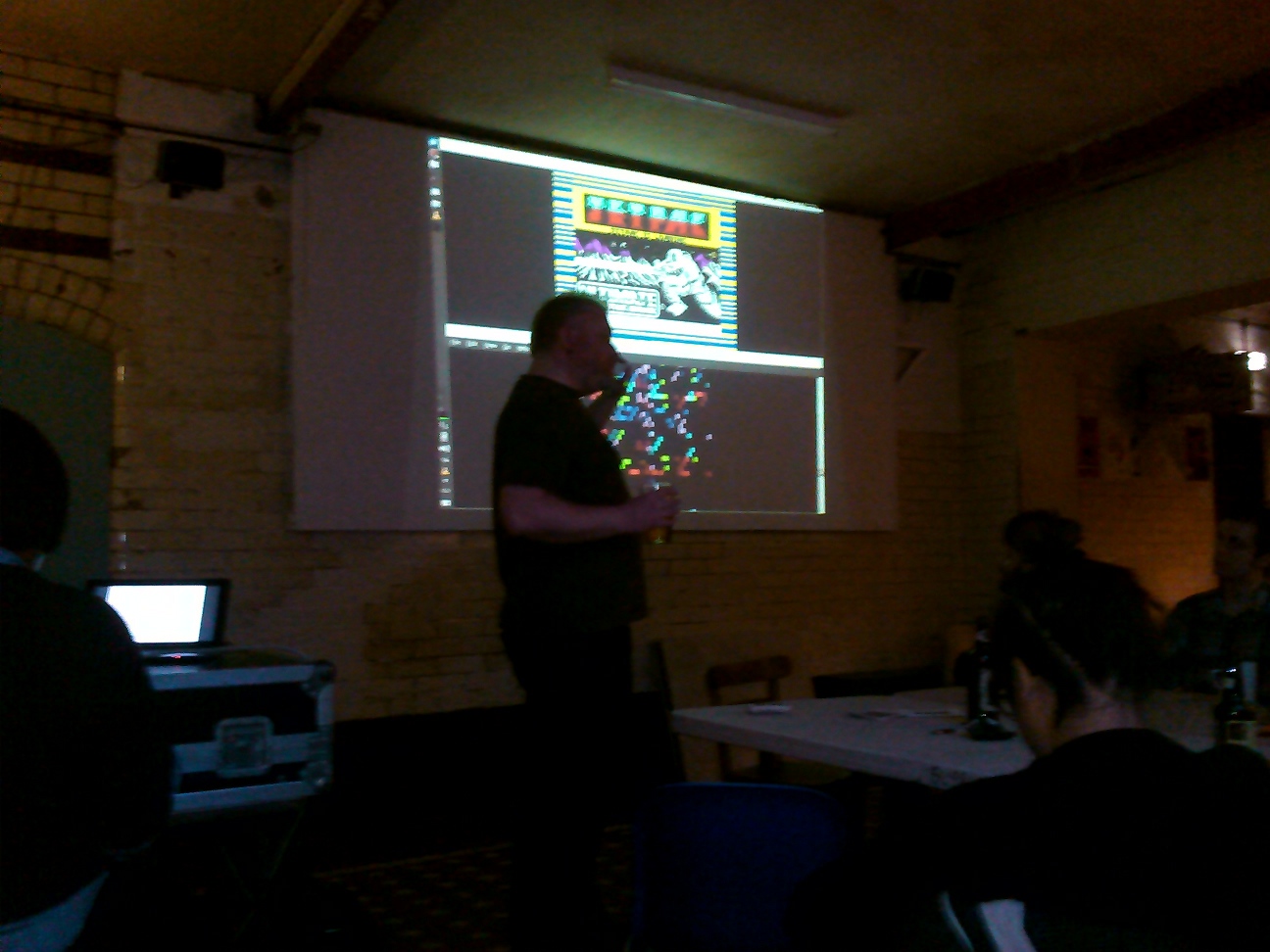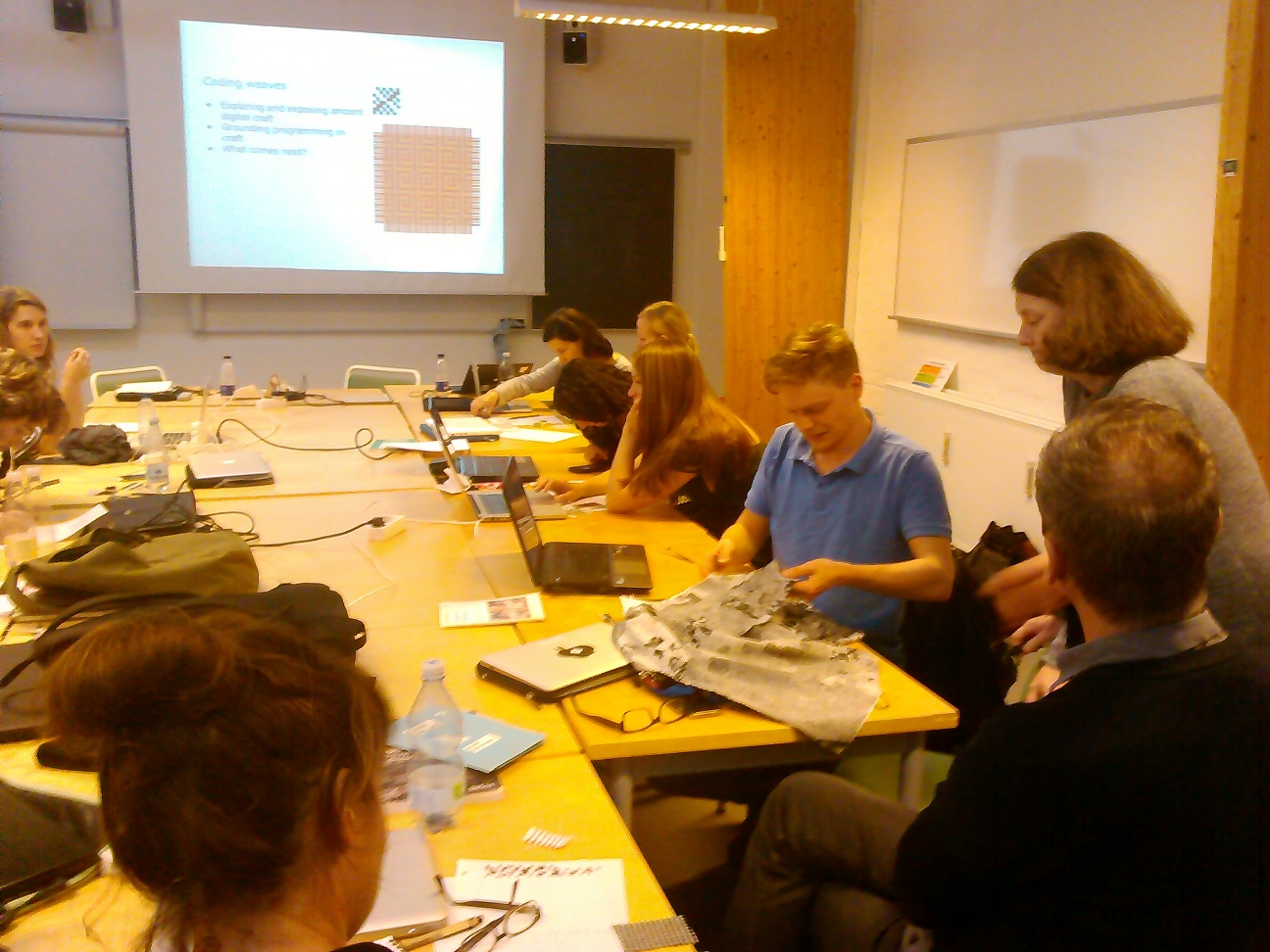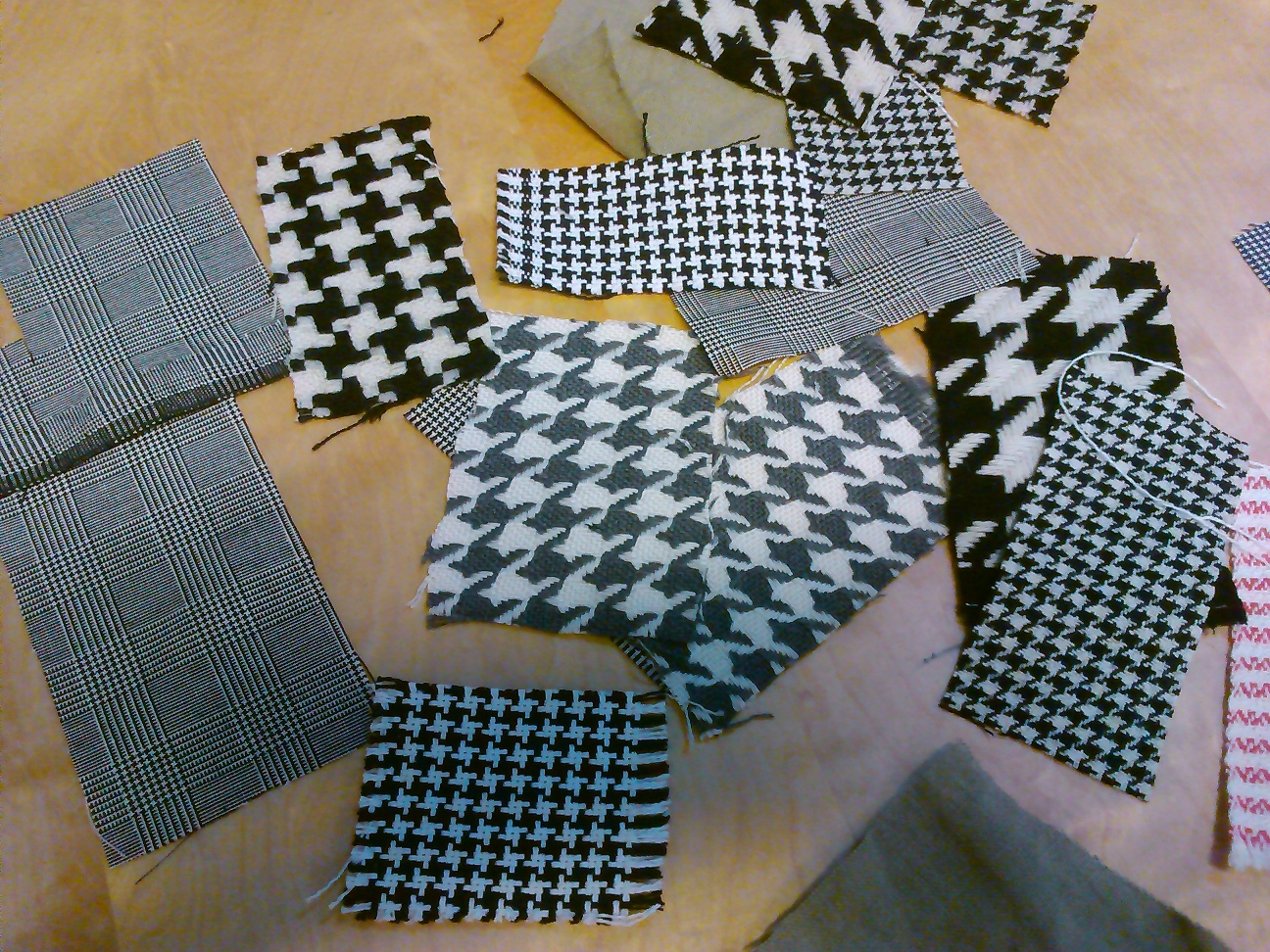Hack the City is a series of events in Sheffield about using open data for a better urban and civic experience. Their next hackathon is taking place this Saturday 10th January 2015, and we will be teaming up with the Live Coding Research Network to bring a diverse team of live coders and textile artists together to turn open data into performances, knitwear and whatever else we can think of, as counterpoint to the more conventional hackathon activities such as app building.
Participants include:
- Antonio Roberts (aka hellocatfood; Birmingham), live coder of glitch art reknown
- Amy Twigger Holroyd (University of Leeds), not only a knitter but a reknitter, who uses knitting techniques to rework existing, often machine-made garments
- Nora o Murchu (University of Limerick), whose new Open Source Aran project fits this event perfectly
- Francesca Sargent (Falmouth), part of FoAM Kernow and hacker on our Weaving Codes, Coding Weaves project
- Joanne Armitage (University of Leeds), composer and PhD candidate with research interests which include in haptic/vibrotactile feedback in music performance
- Shelly Knotts (University of Durham), live coder, composer and curator in network and algorave music
- Holger Ballweg (Northumbria University) from the German live coding band Benoit and the Mandelbrots of legend
- Rodrigo Velasco (University of Leeds) is a practitioner of on-the-fly codepoetry and live coding, on a research visit from Mexico City.
- Helen Thornham (University of Leeds) is a researcher and ethnographer whose interests include transformative use and appropriation of new media, and feminist new media theory.
- Sam Meech (Manchester) is an artist, videosmith and knitter whose many projects include knitting digital.
- Victoria Bradbury (CRUMB, Sunderland) is a new media artist working in the intersections between code, body and object.
- Plus myself Alex McLean (University of Leeds), live coder and so on.
We hope our participation in this event will beget strange and wonderful surprises, which we will develop towards a standalone Code and Craft Hackathon in the future.
